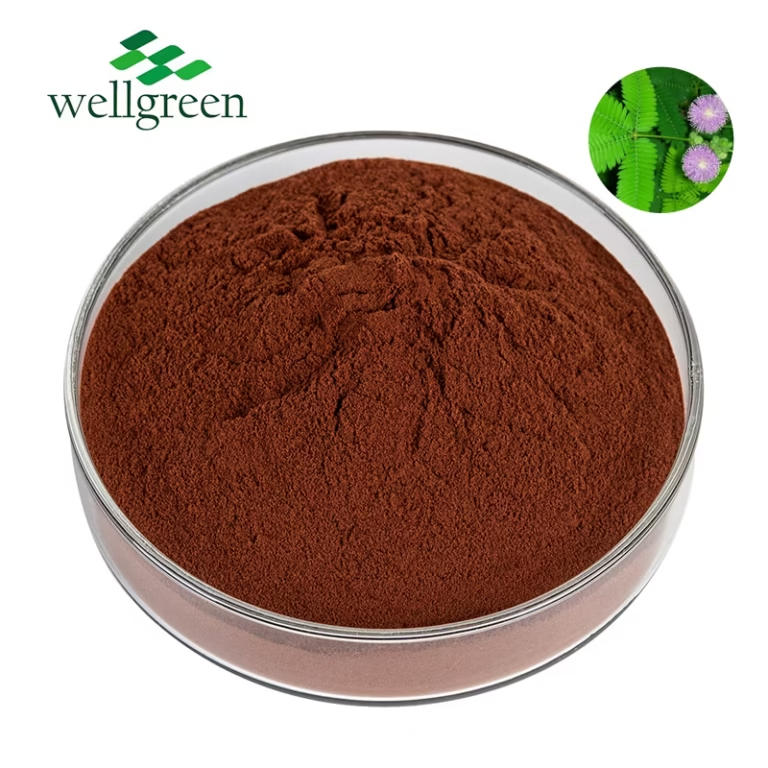Mimosa Hostilis: A Sacred Plant for Indigenous Cultures
Mimosa Hostilis: A Sacred Plant for Indigenous Cultures
Blog Article

Mimosa hostilis is a venerable plant deeply ingrained in the traditions of many Indigenous cultures across South America. For centuries, it has been employed by indigenous communities for its diverse spiritual and medicinal uses. The root bark, known as kahie, is particularly revered for its entheogenic effects, believed to trigger profound visions that facilitate growth.
Through traditions, the plant spirit of Mimosa hostilis is invoked, guiding individuals on a path of self-discovery and understanding with their inner selves. The knowledge surrounding this sacred plant has been shared through generations, preserving the rich cultural heritage and wisdom of these communities.
Delving into MHRB Extract: The Mysteries of Mimosa Hostilis
Mimosa hostilis, a vibrant plant indigenous to the Amazon Basin, has captured the attention of both traditional healers for centuries. This intriguing species harbors within its roots a potent extract known as MHRB, which has gained significant recognition in recent times.
MHRB extract is celebrated for its potential, often associated with spiritual exploration. Ancient practices suggest a long history of MHRB use in healing ceremonies.
- Scientists continue to explore the active compounds of MHRB, seeking to uncover its full range of effects.
- The intricacies surrounding MHRB usage require responsibility. It is crucial to engage the expertise of knowledgeable individuals before engaging in any practices involving this powerful substance.
Exploring the Ethnobotanical Uses of Mimosa tenuiflora
Mimosa tenuiflorae, commonly acknowledged as "the acacia", holds a significant position within the ethnobotany literature of diverse cultural groups. Its versatile properties have been utilized for centuries in folk medicinal practices, as well as in ceremonies. The leaves of this remarkable plant possess a rich array of bioactive chemicals believed to exhibit medicinal effects.
From alleviating ailments like wound infections to enhancing spiritual connection, Mimosa tenuiflora has long been respected for its profound impact on human life.
The Chemistry and Pharmacology of Mimosa Hostilis Root Bark
Mimosa hostilis root bark boasts a complex chemical profile, primarily known for its abundant concentrations of alkaloids. Among these, N,N-Dimethyltryptamine and harmaline are particularly important. These molecules possess a range of pharmacological activities, including hallucinogenic effects. The bark furthermore various alkaloids, such as norharmane, which may contribute to its comprehensive pharmacological profile.
The traditional uses of Mimosa hostilis root bark include a range of medicinal purposes, particularly in traditional societies. However, it is crucial to understand that scientific research on the effectiveness of these uses remains limited.
Unlocking the Power of copyright with Mimosa Hostilis
Mimosa hostilis, a plant native to South America, has captured the interest of researchers and individuals alike for its potent chemicals, particularly more info dimethyltryptamine, or copyright. copyright is a powerful copyright substance known for producing intense visuals. By utilizing the bark of Mimosa hostilis, one can explore the realms of copyright-induced experiences. It is essential to remember that copyright is a strong substance and should be treated with caution.
- Safe use is paramount, and consulting from experienced individuals or knowledgeable sources is highly suggested.
- The experience of copyright can be both rewarding but also potentially overwhelming. It is essential to prepare both mentally and physically for the possibilities that may arise.
copyright from Mimosa hostilis provides a unique opportunity to delve into the depths of consciousness, may leading to existential growth and insight.
Challenges in Using Mimosa Hostilis
The utilization of Mimosa hostilis for personal purposes raises a myriad of moral questions. While some argue that its historic significance warrants respect and tolerance, others warn its use due to potential harmful consequences. It's crucial to consider this complex issue with sensitivity, taking into account the religious contexts and potential risks. A balanced perspective is essential for navigating the ethical terrain surrounding Mimosa hostilis.
Cultivating Mimosa Hostilis: A Guide for Growers
Embarking on the adventure of cultivating Mimosa Hostilis can be a fulfilling experience for the dedicated grower. This intriguing plant, indigenous to tropical regions of the Americas, has earned significant attention in recent years due to its distinctive properties. Upon embarking on your cultivation endeavor, it is crucial to understand the specific needs this plant demands to thrive.
- Guaranteeing adequate sunlight is paramount for healthy Mimosa Hostilis growth. These plants flourish in direct sunlight, ideally receiving a minimum of ten hours per day.
- Maintaining well-drained soil is essential to prevent root rot, a common issue that can devastate your plants. A mixture of loamy soil with decomposed matter is suitable.
- Frequent watering is necessary, but be mindful not to overwater your Mimosa Hostilis. Allow the top inch of soil to harden before providing another irrigation.
The Shamanic Traditions Surrounding Mimosa Hostilis
Deep within the sacred forests of South America, the shrine of transformation have been woven for generations. Among these powerful allies is Mimosa Hostilis, a humble plant revered by the shamanspiritual traditions of indigenouscommunities. It embodies within its bark a wellspring of wisdom, guiding spirits on their journeys into the spirit realm.
The elders understand that Mimosa Hostilis is not simply a medicinal agent; it is a bridge between realms, connecting us to the universal energies that flow through all of creation.
Confronting Legal Issues with Mimosa Hostilis
The legal status of mimosa hostilis can be from one country to another. It means that the acceptability of possessing, using, or growing this plant depends on your particular place of residence.
Furthermore, laws and regulations pertaining to mimosa hostilis are constantly evolving. It is therefore crucial that you thoroughly research the specific legal framework in your region.
- Talking to a legal professional who specializes in cannabis laws is highly advised.
- Keeping informed about any amendments to the law can help you stay clear of any potential legal issues.
Mimosa Hostilis and Spiritual Exploration: A Journey Inward deepening
The ancient wisdom whispered through the rustling leaves of Mimosa Hostilis calls to seekers on a inner quest. Journeying upon this path is to unleash hidden dimensions within, where the veil between worlds blurs. It's a profound experience that illuminates the soul, revealing truths sleeping beneath the surface. As you dissolve with the essence of this sacred plant, be prepared for revelations that reshape your perception.
- Embrace the unknown with an open heart and a eager mind.
- Let go all expectations and allow yourself to be swept away by the rhythm.
- Remember, this is a journey of self-discovery. Trust in your own intuition.
The wisdom gained through Mimosa Hostilis vibrates long after the experience has ended. It is a gift that can alter your life in profound and eternal ways.
Understanding the Challenges and Benefits of Mimosa Hostilis
Mimosa hostilis is a plant native to South America, gaining increasing attention for its potential pharmacological properties. While it contains valuable compounds like copyright, responsible for its psychoactive effects, it's crucial to approach this plant with respect. Understanding both the risks and the benefits of Mimosa hostilis is essential for safe and informed use. Potential negative consequences can include unpredictable behavior, emphasizing the need for thorough research, responsible consumption, and a secure environment.
- It's important to consult with a healthcare professional before using Mimosa hostilis or any products derived from it.
- Proper dosage is crucial to minimize potential negative consequences.
- Be aware of the regulations surrounding Mimosa hostilis in your region.
- Always prioritize safety and well-being when exploring the use of this plant.
 Report this page
Report this page